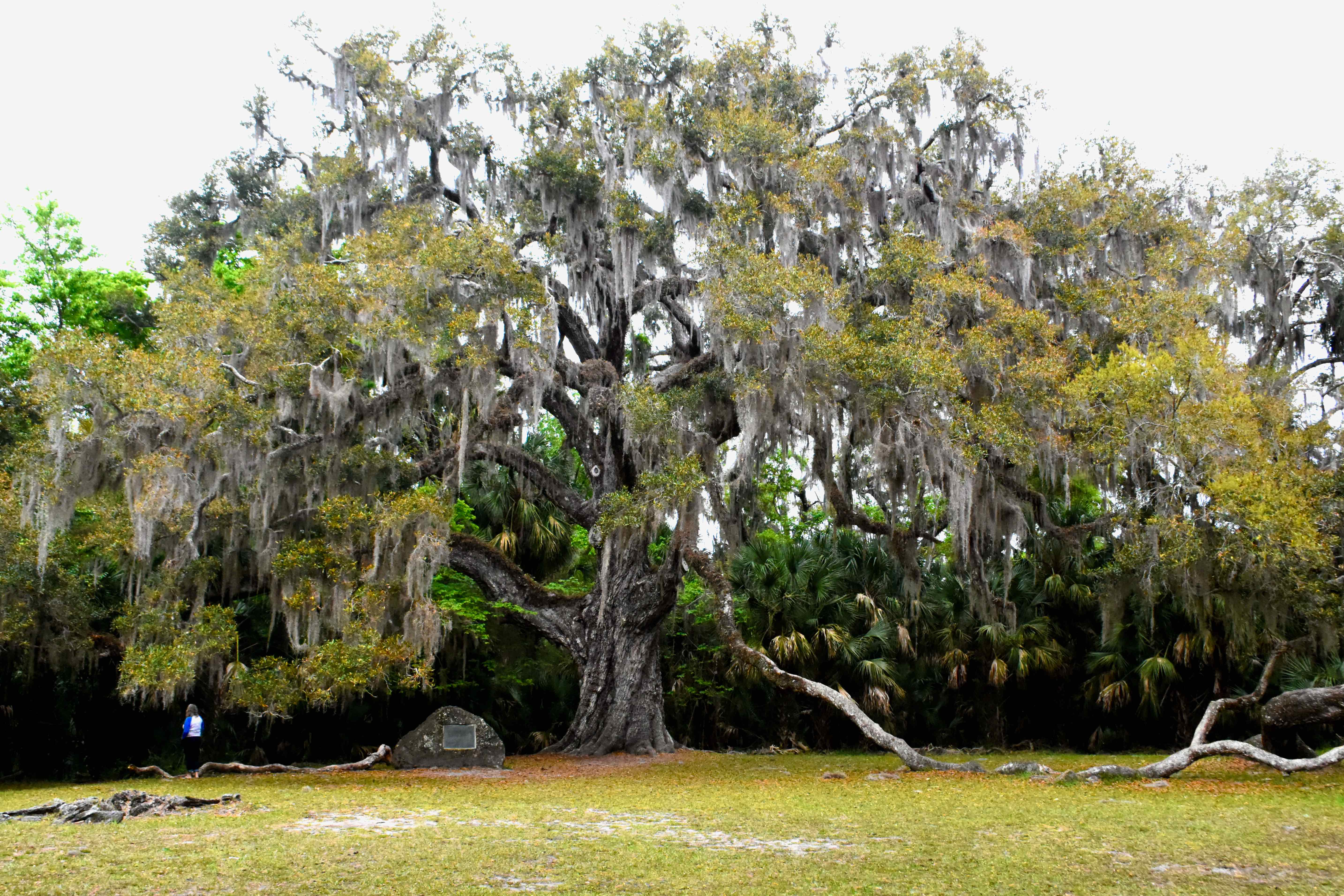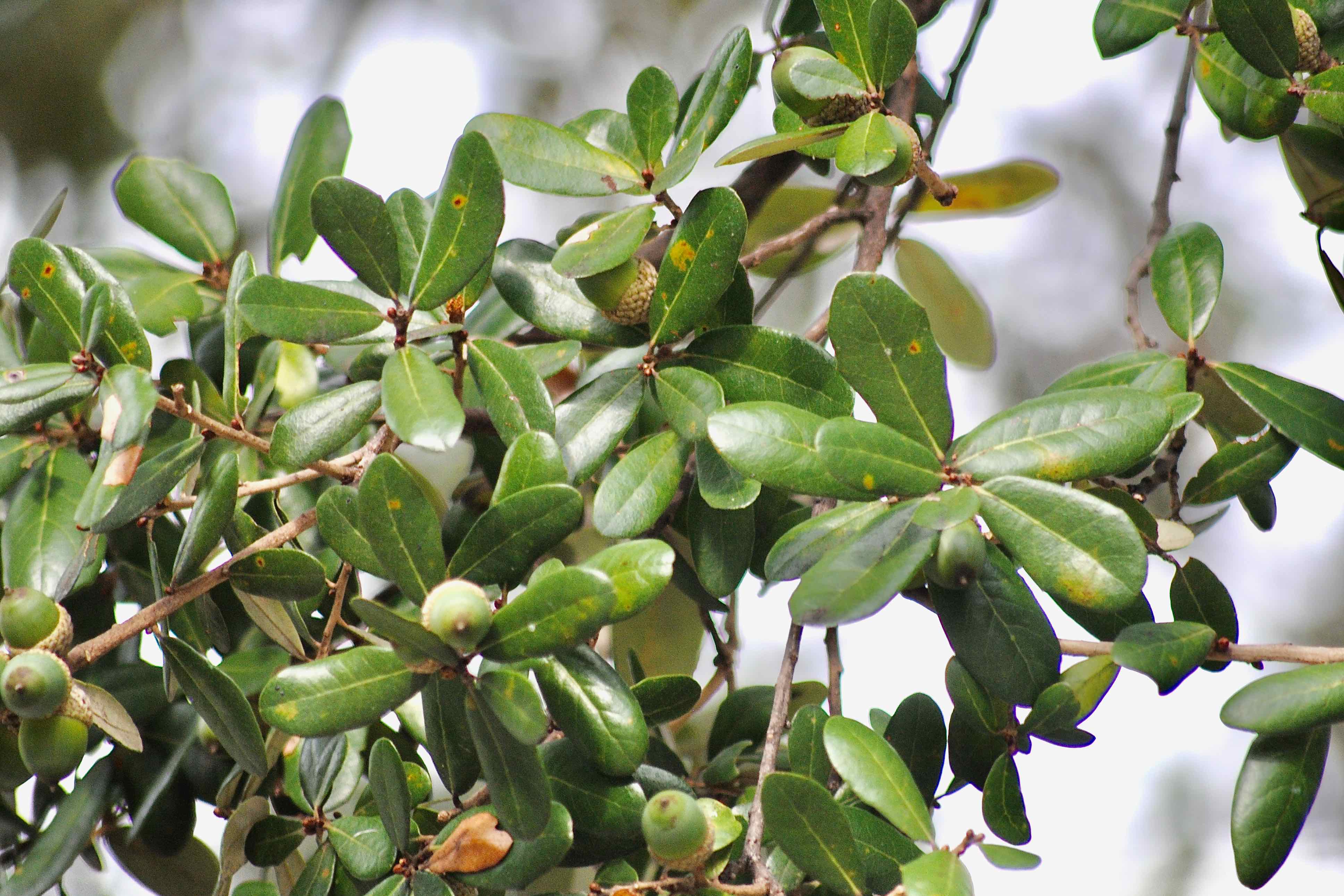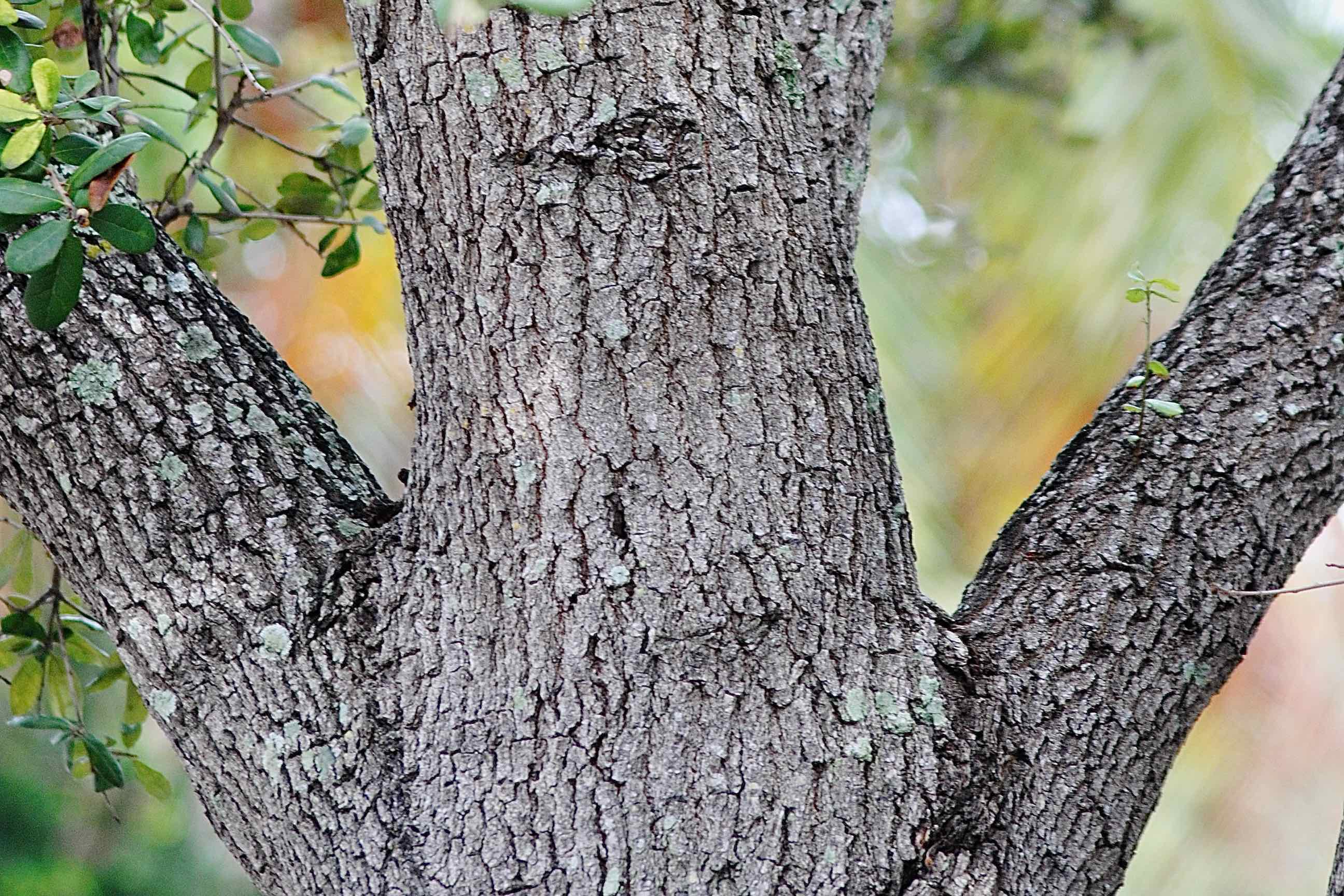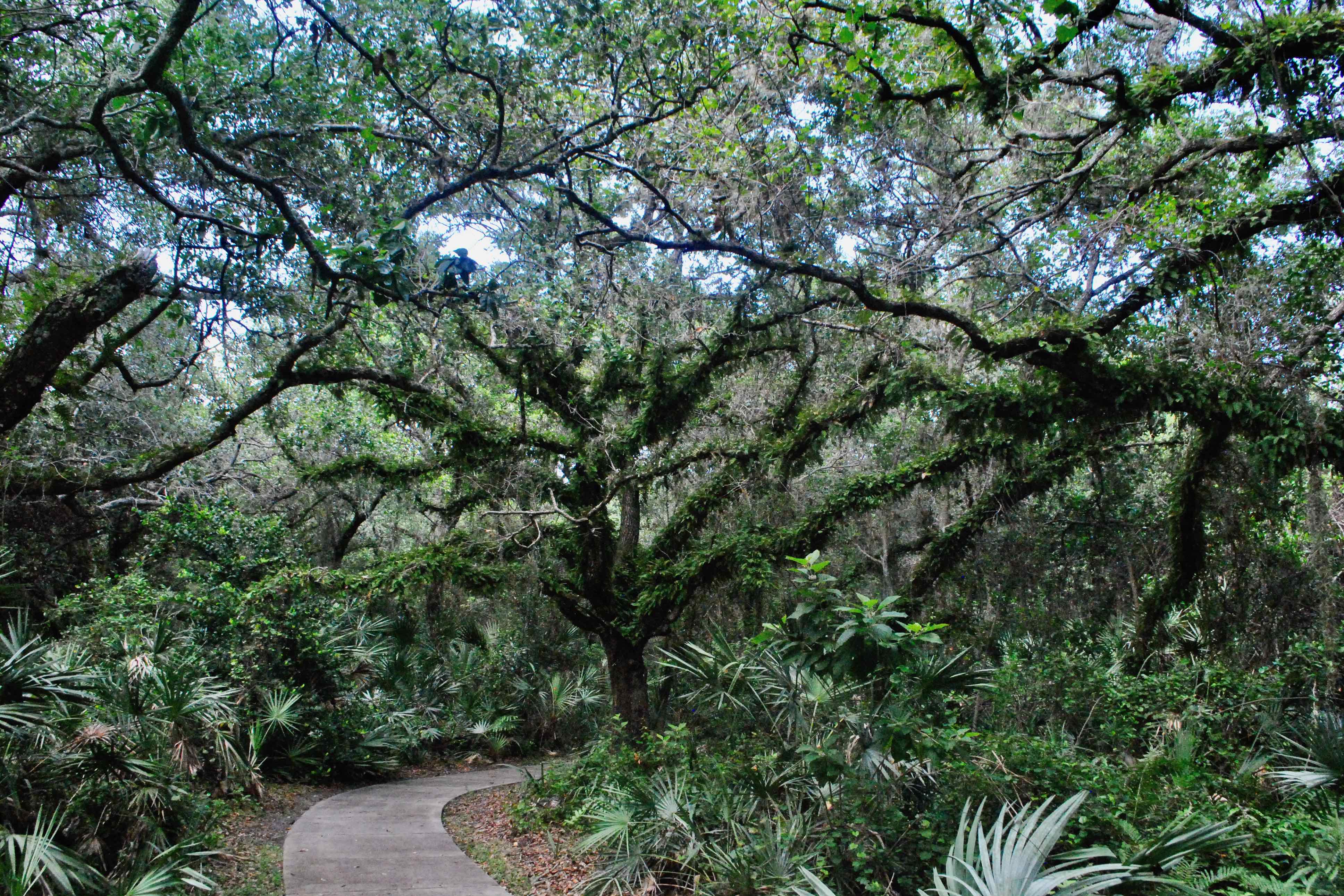
Virginia live oak, photographed at Bulow Creek State Park, Ormond Beach, Volusia County, in March 2019. It's called the Fairchild Oak.
Some lives are measured in years, some in decades, some even centuries. The life of a Virginia live oak, Quercus virginiana, can span millenia. The tree pictured above, known as the Fairchild Oak after David Fairchild, the noted botanist, is said to be 2,000 years old, possibly as old as 2,500. The Roman Empire rose and fell, Christ was born, the Normans conquered England, Columbus sailed across the Atlantic and Ponce de Leon first stepped foot on Florida's shores, Neil Armstrong stepped on the moon, all within its lifetime.
Ponder that for a moment against our alloted three score and 10. Respect this tree.
But for us, live oaks, aren't just trees. They're living works of art with their magnificently twisted limbs covered in ferns and orchids and airplants. Incredibly important works of art both culturally and in terms of the natural world.
They are in some ways symbols of the South, especially when curtains of Spanish moss decorate their limbs. Virginia live oaks, or simply live oaks, are ubiquitious along the coastal plain from Texas to Virginia. They are Florida natives, found in all but a handful of counties.
Live oaks can be massive, growing as tall as 80 feet, with a flat crown that spreads 100 feet to as much as 150 feet in diameter. Fairchild is even bigger. The leaves are unlobed, unlike northern oaks, irregularly shaped and a glossy green. The name comes from the appearance that it is always green, but it does drop older leaves in the spring as new ones come on. Tardily deciduous, botanists call it. The bark is roughly furroughed and light gray to black in color.
Large live oaks can survive fire as long as the crown is not burned. Young live oaks can resprout after fire.
Just looking at the tree will tell you how important it is. Live oak provides a place to grow for myriad epiphyte species (airplants), including the resurrection ferns that cover the limbs on the tree shown at the bottom left. Spanish moss and other air plants find homes on these trees. Birds, as you might expect, eat the acorns — blue jays in particular love acorns so much that they are credited with spreading the species throughout North America after the last ice age. Squirrels, naturally, feast off the trees, as do black bears and white-tailed deer. Live oak also provides shelter and shade for many species.
Butterflies and bees are attracted to live oaks for the nectar their flowers provide. White m hairstreak, horace duskywing and northern hairstreak butterflies and consular oakworm moth use the trees as hosts.
With their twisted branches and relatively short trunks, live oaks have little utility as timber. However those same qualities, plus the strength and density, made them perfect for ship building, particularly interior support structures. The first publicly owned timber lands in the U.S. were stands of live oak bought to preserve them for ship building, circa 1799. Its wood is the heaviest of all oaks and resistant to rot and disease. The interior structures of the U.S.S. Constitution, "Old Ironsides" was made from live oak.
Live oaks were a source of food — young acorns are said to be tasty, low in protein but high in fat and fiber. The roots of young trees form starchy tubers that were sliced and fried like potatoes. Native americans used it for food, tools, dyes and medicines. The Houma used it to treat dysentery. The Seminoles used it to treat aches and pains. The Choctaw made paints.
Virginia live oak is a member of Fagaceae, the beech and oak family. Other common names: scrub live oak, southern live oak.



